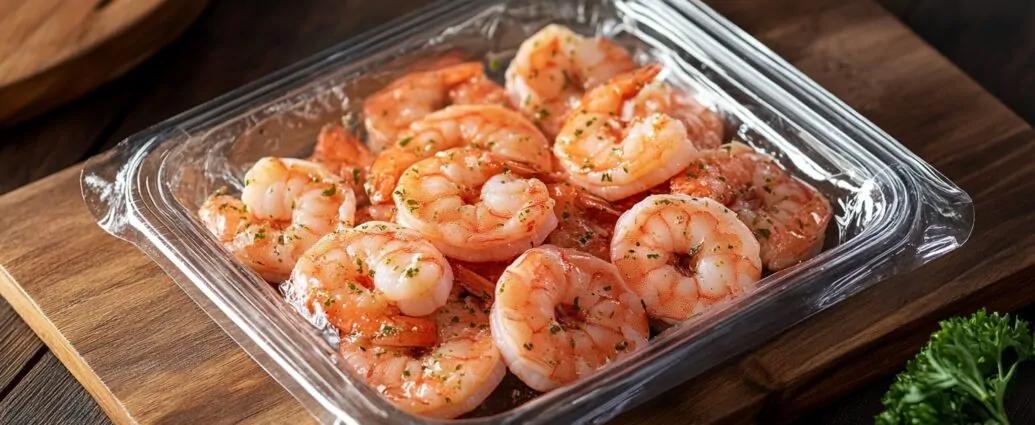Perfectly cooked shrimp should be juicy and tender. Overcooked ones turn rubbery, losing flavor and ruining a meal. Avoiding that fate starts with knowing your shrimp.
Frozen shrimp come in two main types: raw and pre-cooked. Each requires a different approach. Knowing which one you have will guide every step.
Cooking straight from frozen offers speed and convenience. It also preserves quality if done right, eliminating the need for a long thawing process.
Best Methods for Cooking Raw Frozen Shrimp (Without Thawing)
Raw frozen shrimp can be cooked directly without the hassle of thawing. With the right method, it’s easy to achieve a juicy, flavorful result that doesn’t taste like it came from the freezer.
Two reliable techniques work exceptionally well: poaching and roasting or sautéing.
Each one has its strengths, depending on your desired flavor, texture, and recipe.
Method 1: Poaching

Poaching provides one of the most forgiving approaches to cooking raw frozen shrimp. Ideal for those who want soft, juicy results without complicated steps.
The method works particularly well for shrimp that will be served cold, such as in shrimp cocktail, salad toppings, or rice paper rolls.
Gentle water immersion protects the protein structure, allowing even the most basic cook to turn out restaurant-quality results.
- Fill a medium saucepan about three-quarters full with water.
- Add a generous pinch of salt—this seasons the shrimp directly during cooking.
- Add aromatics for additional flavor (optional, but highly recommended):
- One or two slices of lemon
- A few whole black peppercorns
- Fresh parsley sprigs
- Bring the water to a strong boil over high heat.
- Once boiling, immediately remove the saucepan from the heat source.
- Add frozen shrimp straight into the hot water. There’s no need to thaw first.
- Stir gently to distribute shrimp evenly.
- Cover the pot tightly with a lid.
- Let the shrimp steep in the hot water.
Timing and indicators of doneness:
- Steep the shrimp for 5 to 6 minutes.
- For bulkier shrimp or larger quantities, extend the time by 1 to 2 minutes.
- Look for two key signs:
- Flesh turns fully opaque (translucent centers are undercooked).
- Shrimp curls into a relaxed “C” shape (a tight curl means it’s going too far).
Method 2: Roasting or Sautéing

Roasting and sautéing offer more flavor-forward results and a satisfying contrast in texture.
Roasting adds a caramelized edge, while sautéing builds quick flavor with minimal effort. Both are excellent when paired with fresh vegetables or grains.
- Preheat your oven to 400°F (200°C)
- Spread frozen shrimp in a single layer on a baking sheet. Use parchment paper for easier cleanup.
- Drizzle lightly with olive oil.
- Season shrimp with your preferred spice mix. Suggestions include:
- Paprika
- Garlic powder
- Crushed red pepper
- Salt and black pepper
Add fast-roasting vegetables to the tray if desired:
- Asparagus spears
- Cherry tomatoes
- Sliced bell peppers
- Roast for 8 to 10 minutes.
Flip shrimp and veggies once halfway through to ensure even cooking.
- Heat a tablespoon of olive oil in a large skillet over medium-high heat.
- Place frozen shrimp in a single layer in the hot pan.
- Sprinkle seasonings over the top.
- Stir occasionally, but avoid constant flipping—shrimp need contact with the surface to brown.
Cook for 5 to 7 minutes, or until the shrimp are:
- Opaque all the way through
- Slightly browned at the edges
- Just curled into a loose “C” shape
Reheating Pre-Cooked Frozen Shrimp
Pre-cooked frozen shrimp offer convenience but come with one critical rule—never cook them again.
They’re already done, so any extra heat only dries them out or turns them rubbery.
Success lies in gentle reheating that warms them through without altering their delicate texture.
Key Rules
Once pre-cooked shrimp hit the heat, the clock starts ticking fast. Every second matters. High heat ruins texture. Dryness and toughness follow when they sit in a hot pan too long. Precision is more important than power.
- Reheat, don’t re-cook
- Keep heat low
- Watch closely to prevent overdoing it
- Add seasonings only at the end for best flavor control
Simple Stovetop Heating
Start by thawing the shrimp properly. Let them sit in the refrigerator overnight for even results. If time is short, place them in a colander and rinse under cold water for a minute or two.
Always pat dry before heating. Wet shrimp in a pan cause unwanted steam, not sear.
Warm a skillet over low heat. Add a splash of olive oil or a plant-based buttery spread. Once the oil is warm but not sizzling, add shrimp in a single layer.
Season lightly with salt, pepper, and garlic powder if desired. Stir gently. Avoid harsh flipping or long contact with the heat source. Look for gentle steam rising and a firm but still tender feel to each piece.
Finish with a dash of lemon juice and a sprinkle of fresh parsley or chives. Acidity brightens the flavor, and herbs add freshness without overpowering the main ingredient.
- Keep heat on low
- Avoid overcrowding the pan
- Do not walk away—shrimp heat fast
- Add flavor enhancers at the end
Quick Uses
Pre-cooked shrimp belong in every busy cook’s playbook. They add protein to meals in minutes, no prep required. Their short reheating time makes them ideal for fast, flavor-packed dishes.
Add them to pasta just before serving—think creamy fettuccine or garlic-laced linguine. Toss over fresh salads for a quick lunch. Use them in wraps with avocado, lettuce, and a light dressing.
Pair them with a grilled steak for an easy surf-and-turf option. When served cold, they work beautifully in shrimp cocktail, ceviche-style snacks, or lettuce cups.
- Shrimp tacos with lime slaw
- Cold pasta salad with feta and cherry tomatoes
- Protein bowls with grains and greens
- Skewers with vegetables for quick party bites
- Classic shrimp cocktail with zesty sauce
Types of Frozen Shrimp

Shrimp in the freezer aisle usually come raw or pre-cooked. Raw ones need full cooking, while pre-cooked just need gentle reheating. Choosing the right technique begins here.
Peeled and deveined shrimp are best for direct cooking. They eliminate prep and allow even cooking without the hassle of removing shells mid-recipe.
Individually quick frozen (IQF) shrimp cook more evenly. They don’t clump together in a frozen mass, which ensures better temperature control during cooking.
Key Considerations Before Cooking
Avoid shrimp labeled “previously frozen” and now thawed at grocery stores. These can have compromised texture and may already be deteriorating.
Pay attention to shells, tails, and veins. Tails can add visual flair or help with flavor in broths, but not every recipe benefits from them. Preferences and recipe type should guide the decision.
Final Thoughts
Cooking frozen shrimp can be effortless with the right method. Poach or roast raw shrimp straight from the freezer. Reheat pre-cooked ones with care to maintain tenderness.
Start with the shrimp type. Let it guide the cooking process. Small changes make a huge difference in taste and texture.
Less heat, more patience. That’s the key to perfect frozen shrimp every time.



